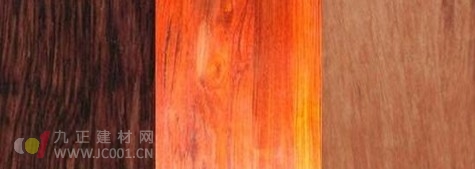In the "Redwood" national standard, there are five categories and eight categories, eight of which are rosewood, fragrant wood, black rosewood, red rosewood, rosewood, ebony, wenge, striped Ebony, of which rosewood and fragrant wood have only one kind of wood, namely lobular rosewood and Hainan huanghuali. At present, these two materials have been extinct, and some of the old materials have entered the auction field. Most of the applications are wood of rosewood and black rosewood, and red rosewood. When you visit the mahogany furniture mall, you will find that in the mahogany furniture, rosewood furniture and rosewood furniture are relatively more, so what is the difference between rosewood and rosewood?

From left to right, black rosewood, red rosewood, rosewood
The difference between rosewood and rosewood
The difference in weight between rosewood and black rosewood
The rosewood belongs to the genus Pterocarpus, including seven species, namely the Hedgehog rosewood, the Vietnamese rosewood, the Indian rosewood, the Andaman rosewood, the large fruit rosewood, the sacred rosewood, the bird foot rosewood, and the rosewood species are all behind. The words "red sandalwood", since they belong to one category, have many similarities. Commonly found in the market are hedgehog rosewood and large fruit rosewood. Hedgehog rosewood is also known as the African rosewood, while the large fruit rosewood is known as the Burmese rosewood. The rosewood wood is light and soft, mostly floating in water, and the air dry density is 0.53-1.01 grams per cubic centimeter (average 0.79-0.91 grams per cubic centimeter);
Rosewood includes black rosewood and red rosewood, red rosewood sinks in water, and 7 red rosewood (Bali Dalbergia, Saizhou Dalbergia, Sian rosewood, F. rosewood, Chinese and American Dalbergia) The air dry density of A. serrata and Dalbergia sinensis is 0.90-1.22 grams per cubic centimeter (average 1.02-1.14 grams per cubic centimeter). Black rosewood also sinks in water, 8 kinds of black rosewood (knife-shaped black rosewood, black rosewood, broad-leaved rosewood, Lushi black rosewood, East African black rosewood, Brazilian black rosewood, Amazon yellow Tan, Belize Dalbergia has a dry density of 0.82-1.33 grams per cubic centimeter (average 0.92-1.06 grams per cubic centimeter).
It can be seen that in terms of weight, black rosewood and red rosewood are much heavier than rosewood wood. When purchasing, consumers can pick up the weight.
The difference between rosewood and black rosewood and red rosewood in fluorescence reaction
The wood shavings of these three types of wood are immersed in water, and the rosewoods are more fluorescent (the most significant of the bird's foot red sandalwood), while the red rosewood and black rosewood are not.
The smell of rosewood and black rosewood, red rosewood also has a big difference
Rosewood wood has a spicy aroma, while the hedgehog has some odor; while the black and black rosewood has a strong sour scent.
The difference in color is also obvious
The pears are reddish-brown to purplish red, relatively uniform, and have a homogenous ray structure, and have no tendency to form a ray, usually in a single row. Red black rosewood wood color red brown to purple red or black, relatively uniform, often mixed with dark stripes, the ray tissue is usually homomorphic, the shape is obvious, usually 2 columns, less single-ray.
Through the comparison of the above aspects, we can clearly identify rosewood and rosewood, and the rosewood is obviously better than the rosewood wood. Rosewood is a more common kind of rosewood, and acid Branch wood is the high-grade mahogany after the lobular rosewood and huanghuali, and its collection value and investment appreciation potential is very large. When purchasing mahogany furniture, you can choose according to your needs and hobbies.
It has strong corrosion resistance, strong adhesion, high hardness, wear resistance, salt spray resistance, acid and alkali resistance, high gloss, high solid content, high fullness and so on.
Characteristics: The characteristics of solvent-free epoxy coatings are as follows: solvent-free epoxy coatings are environmentally friendly, solvent-free paint film thickness 200-300 microns, corrosion resistance and so on. The disadvantage is that the use time is too short, the paint film is more brittle and the viscosity is large. No volatile organic solvent, solid content up to 100% room temperature curing 5-45C film adhesion, excellent mechanical properties, convenient construction. The film has excellent water resistance. Due to the use of special curing agents, the cured film is non-toxic and does not pollute drinking water and food.
Solvent-Free Epoxy Self-Leveling Primer ,HDPE Water Supply Plastic Pipe ,Hdpe Pipe For Water Supply,Black Water Supply HDPE Pipes
Jiangmen Kasole Building Materials Co., LTD. , http://www.kasole-paint.com